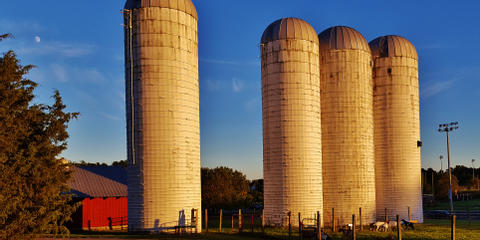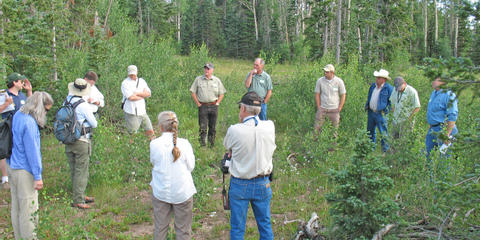Federal funding programs are under review as of 1/27/25. We'll make updates as new info is released.
The Emergency Forest Restoration Program (EFRP) helps the owners of non-industrial private forests restore forest health damaged by natural disasters. The EFRP does this by authorizing payments to owners of private forests to restore disaster damaged forests. Forests provide shelter for wildlife, help provide nutrients for soil, and help protect water supplies. By restoring forests and forest health the EFRP works to protect natural resources and wildlife habitats.
The local FSA County Committee implements EFRP for all disasters with the exceptions of drought and insect infestations. In the case of drought or an insect infestation, the national FSA office authorizes EFRP implementation.
Enterprises
Eligibility
The FSA County Committee inspects the damage to determine if forest land is eligible for EFRP. For land to qualify for EFRP funds, the damage from the natural disaster must create new conservation problems that if not dealt with would (1) harm the natural resources on the land and/or (2) significantly affect future land use.
Only owners of nonindustrial private forests with tree cover existing before the natural disaster occurred are eligible to apply. The land must be owned by a private individual, group, association, corporation or other private legal entity that has decision making authority on the land and doesn’t use the land for business purposes.
FSA county committees determine land eligibility using on-site damage inspections that assess the type and extent of damage. To be eligible for EFRP, nonindustrial private forest (NIPF) land must:
-
Have existing tree cover (or had tree cover immediately before the natural disaster occurred and is suitable for growing trees); and
-
Be owned by any nonindustrial private individual, group, association, corporation, or other private legal entity.
Application Instructions
Funding for EFRP is determined by Congress. Up to 75% of the cost to implement emergency conservation practices can be provided, however the final amount is determined by the committee reviewing the application. The FSA County Committee is able to approve applications up to $50,000 while $50,000 to $100,000 requires state committee approval. Amounts over $100,000 require the approval of the national FSA office. Additionally, a limit on payments of $500,000 per person or entity per disaster applies.
Owners should check with their local FSA office to find out about EFRP sign-up periods after a natural disaster has occurred.
Resources
Related Programs

Farm Storage Facility Loan Program (FSFL)
Farm Service Agency
- Loan
- Infrastructure
- Equipment
- Storage
- Lighting
- Delivery Vehicle
- National
- Oilseeds
- Peanuts
- Pulse Crops
- Hay
- Honey
- Biomass
- Fruits
- Vegetables
- Floriculture
- Hops
- Maple Sap
- Milk
- Cheese
- Yogurt
- Butter
- Eggs
- Rye
- Aquaculture
- Poultry
- Livestock
- Grains

A Climate-Smart Strategy for the Michigan Foodshed
Star of the West Milling Company, U.S. Department of Agriculture
- Grant
- Climate-Smart
- Beginning Farmers
- Women
- MI
- Wheat
- Dried Beans
- Soybeans

A Comprehensive Evaluation of the Impact of Industrial Hemp and Soil Microalgae Consortium as High-Efficiency Carbon Sequestration Model Plants
Florida A&M University, U.S. Department of Agriculture
- Grant
- Climate-Smart
- AL
- FL
- LA
- Hemp

A Multi-Faceted Approach to Incentivizing Woody Perennial Growers to Establish Cover Crops in Orchards in Four Diverse Regions of the United States
Agoro Carbon Alliance US, U.S. Department of Agriculture
- Grant
- Climate-Smart
- CA
- WA
- OR
- MI
- FL
- Fruits
- Tree Nuts
Details
Organization
Financial Instrument
Cost Share, Grant
Maximum Award Amount
$500,000
Updated August 30, 2025
Image Credit: Forest Service Pacific Northwest Region
This information was gathered from public sources. Ambrook is not responsible for or able to affect the results of any financial programs listed, nor are they responsible for any incorrect information that is listed or is on the hyperlinked external sites. All information is subject to change.
Explore hundreds more programs on Ambrook.
